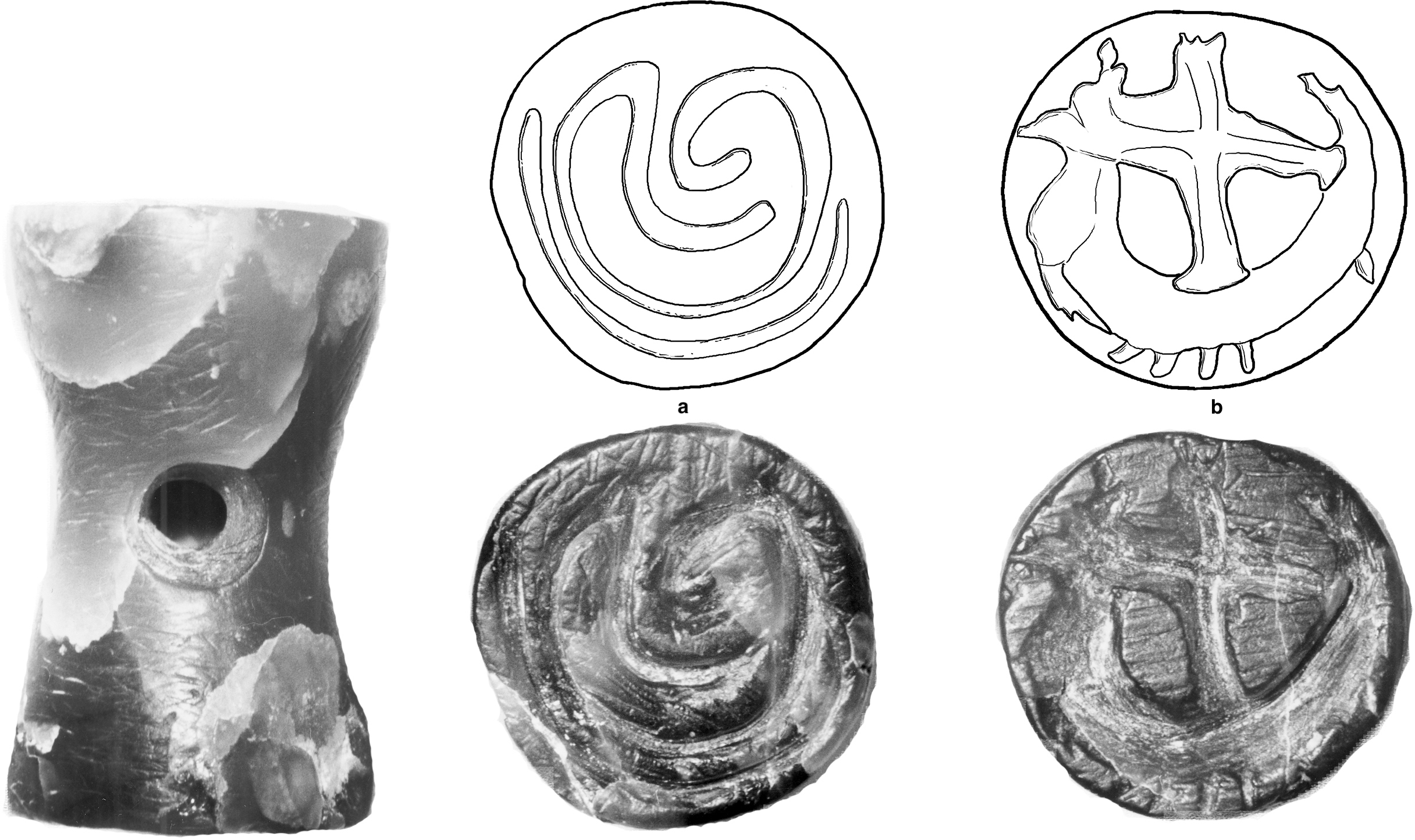Multimedia at Minoan Myrtos–Pyrgos, Crete
It is rare in the scholarship of Bronze Age Crete, during a period as old as the third and second millennia BCE, to present an inclusive account and analysis of all the seals, seal impressions and sealing practices, together with tablets and inscriptions in Linear A, from the whole life of a settlement. This new paper, however, achieves this in publishing comprehensively the evidence for sealing and inscribing practices at the prosperous and long-lived settlement at Myrtos–Pyrgos on the south coast of Crete. Twenty-four documents of Pyrgos are published here, and one discussed from Tel Haror in Israel that is likely to come from Pyrgos or nearby.
This diachronic approach places the documents in their changing contexts during the life of Pyrgos for around a millennium from Early Minoan II to Late Minoan IB, showing the development in the provinces of Crete of seal use — and writing — from simple soft-stone designs, through hard- and soft-stone prisms with Cretan Hieroglyphic signs, to complex figurative scenes with boars, and lions and bulls, that were found with Linear A documents in the shrine treasury of the Country House at Pyrgos when it was destroyed by fire in the 15th century BC.
It is noteworthy that Linear A inscriptions were found at the site. While still undeciphered, the script shows that administrative processes were in action at Pyrgos, with some level of sophistication. The seals, too, are tied to the workings of the Pyrgos bureacracy. Seals are small semiprecious and common stones cut into standard shapes, polished, pierced, and then engraved with ornamental patterns, figures, or, more rarely, inscriptions. When pressed into clay, the seal leaves a legible impression in relief (‘a sealing’). They were used as identity markers, and also worn as conspicuous jewellery (read more about Aegean seals and sealings online at Oxford Classical Dictionary, 2021).
These documents also illustrate the changing cultural — and probably political — relationships of the Pyrgos settlement: in the late Prepalatial period with both central Crete around Knossos and the probably separate polity of Malia, to a strong connection with Malia (on the other side of the Lasithi Mountains) and the Malia–Lasithi–Mirabello cultural and probably political region in late Protopalatial, and then reverting to ties with Knossos in Neopalatial Late Minoan I — when the Country House and its Knossian-style architecture looks to have been an outpost of Knossos’s rule in Crete.
The multimedia of Myrtos–Pyrgos make an intriguing story that is valuable for being seen from a provincial perspective outside the immediate hinterland of Knossos and Malia and enriches our understanding of how Minoan Crete functioned and what could be achieved anywhere in the island.



Multimedia at Minoan Myrtos–Pyrgos, Crete by Judith Weingarten, Silvia Ferrara and Gerald Cadogan





